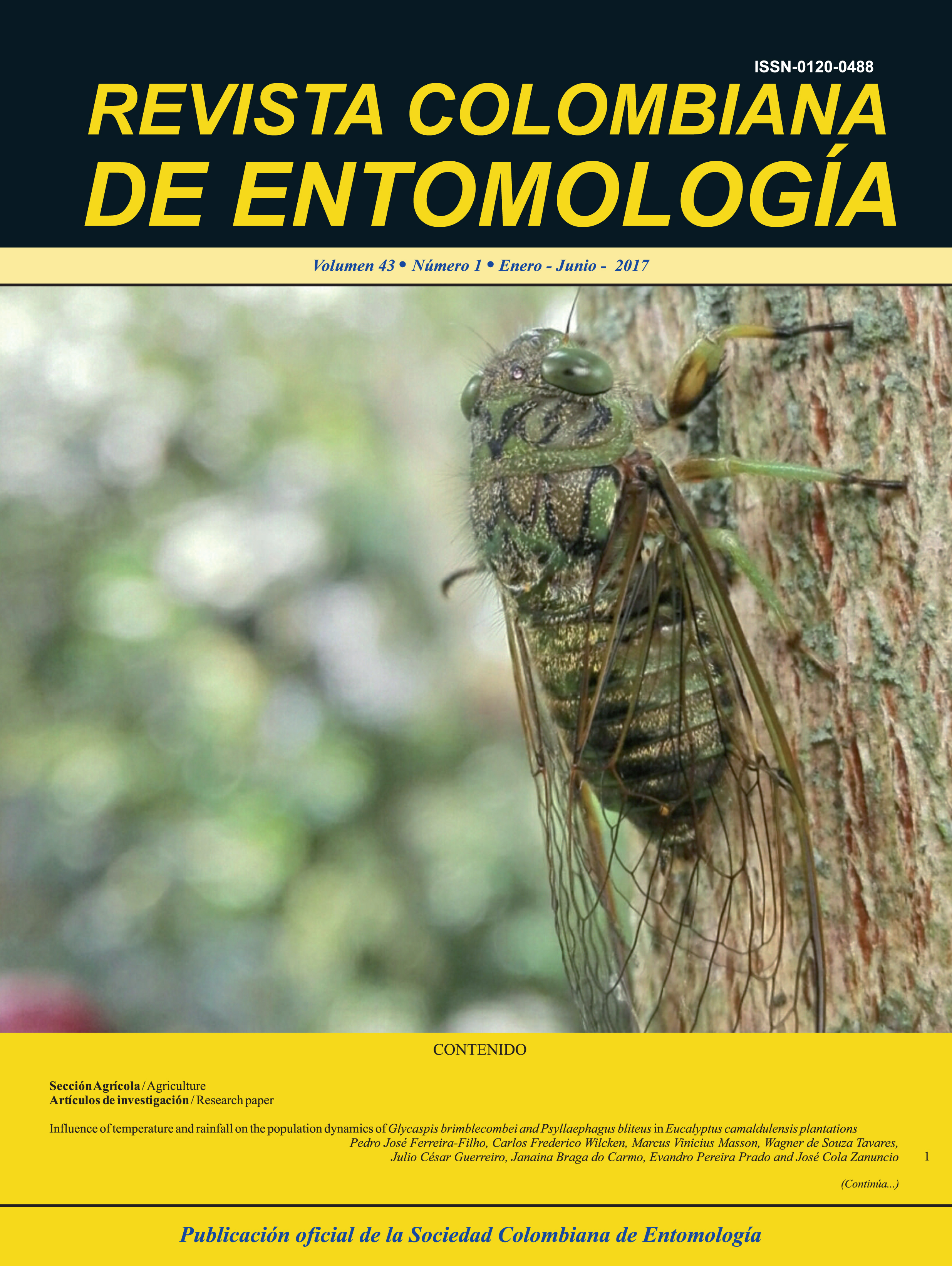Assessment of the influence of Escherichia coli on the immature stages of Aedes aegypti (Diptera: Culicidae) in Girardot, Colombia
Keywords:
Bacteria, Larvae, Pupae, Pools, MosquitoesMain Article Content
Bacterial populations are common in water, especially in ponds and sewage in urban and rural areas.Their abundance seems to affect the presence of some immature aquatic insects.This study aimed to establish the relationship between immature Aedes aegypti states and the presence of Escherichia coli in drinking water reservoirs in the city of Girardot, Colombia. Therefore, a random sampling of 30 water containers in different houses, half of them with the presence of different quantities of immature Ae. aegypti, was made. In all cases, samples were taken in order to make direct counts of E. coli in 3MTM PetrifilmTM Aqua. Nonparametric statistical tests were performed to determine differences and to correlate bacterial populations and vectors. It was found that there is a significant relationship between the number of CFU ml-1 of E. coli and the abundance of immature Ae. aegypti. It was established that there were differences in bacterial abundances between deposits with low, moderate, and high amounts of immature mosquitoes. It was verified that the increase in the number of larvae and pupae of the vector was higher as water samples had higher amounts of E. coli.
Downloads

This work is licensed under a Creative Commons Attribution-NonCommercial-ShareAlike 4.0 International License.
Authors retain the copyright on their work and are responsible for the ideas expressed in them. Once a manuscript is approved for publication, authors are asked for a publication license for the term of legal protection, for all territories that allows the use, dissemination and disclosure of the same.

